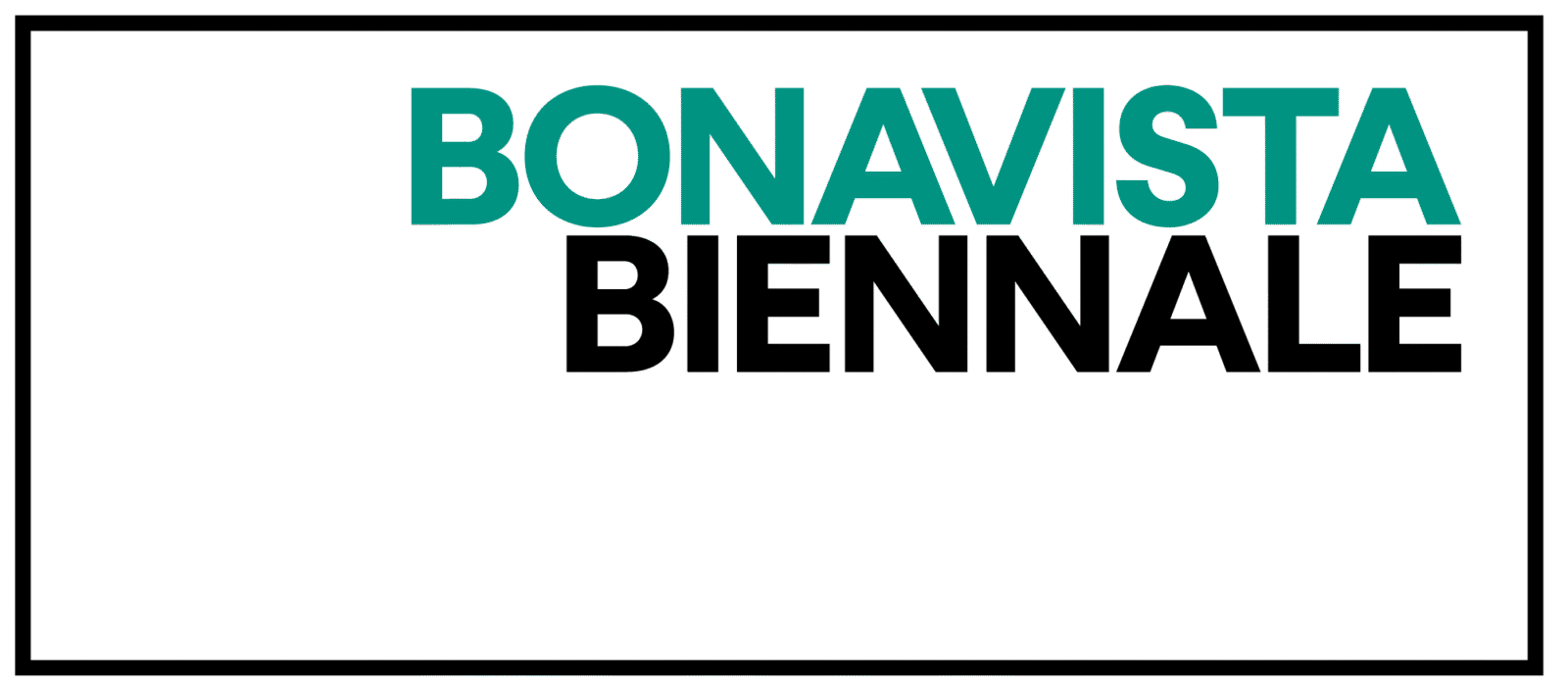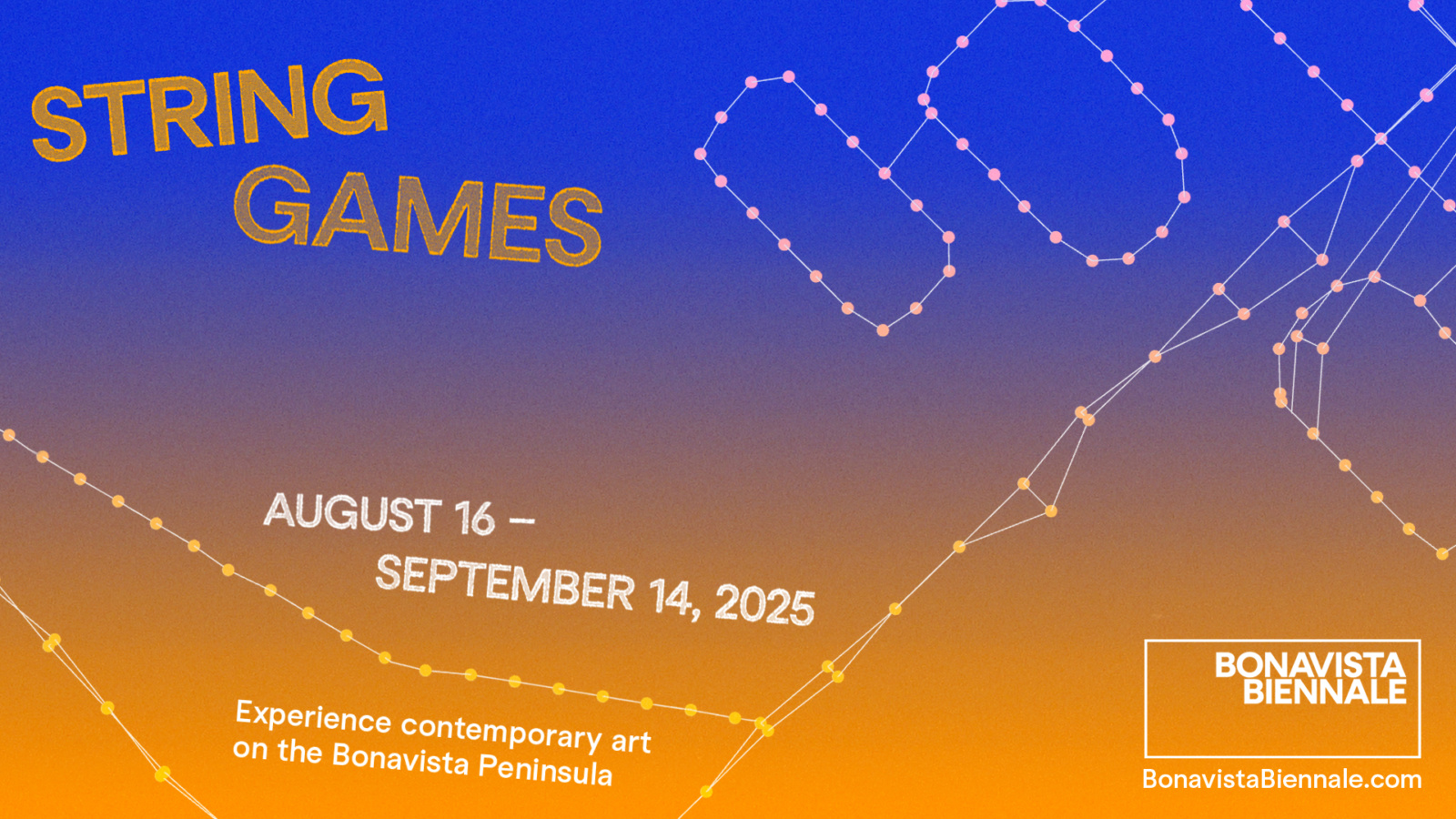
UHA is a partner site for the 2025 Bonavista Biennale: String Games. Visit bonavistabiennale.com to learn more about the Biennale and all of the sites across the Bonavista Peninsula!
Ayaraut. Na’atl’o’. Ayatori. Cat’s Cradle. String Games are one of the oldest forms of handcraft, invented by cultures around the world to tell stories, share wisdom, highlight dexterity, and evoke vivid and fleeting images. Through the careful manipulation of strings of thread, fiber, or sinew, new shapes, figures, and pictures are formed. With endless possibilities bound in a single loop, these games speak to resourcefulness, the spark of imagination, collaborative world-building, and the celebration of the handmade. These connections are woven through time and space, and passed down intergenerationally for millennia, intertwining the past with the present.
This edition of the Bonavista Biennale invites local and visiting artists alike to consider what ties them to place. Many of the artists featured in String Games—whether they are from Ktaqmkuk (Newfoundland) or Nunatsiavut or Nitassinan (Labrador), or connected to these lands by air and oceans—are themselves from islands or remote places, where distance shapes community bonds and notions of time. The artists also forefront traditional crafts, folk histories, and intergenerational knowledge. Collaboration, play, and the spirit of creativity are celebrated alongside family, community, and international connections. Together, the artists in String Games invite us to see and feel something new, through the images, forms, sounds, and movements that they share.
For the first time, artists from multiple international locations have been invited to participate in the Biennale. Hailing from other island, ocean or circumpolar locations, including Hawai’i, Japan, Kalaallit Nunaat / Greenland, and Sápmi / Norway, they share resonant contexts, histories and contemporary realities with artists in Newfoundland and Labrador.
At UHA, the featured artists are Maureen Gruben, and a special exhibition of three senior artists from Nunatsiavut: Andrea Flowers, Nellie Winters, and Sarah Baikie. Highlighting intergenerational connections, the special exhibition is curated by three of the artists’ granddaughters: Vanessa Flowers, Jessica Winters, and Ella Jacque.
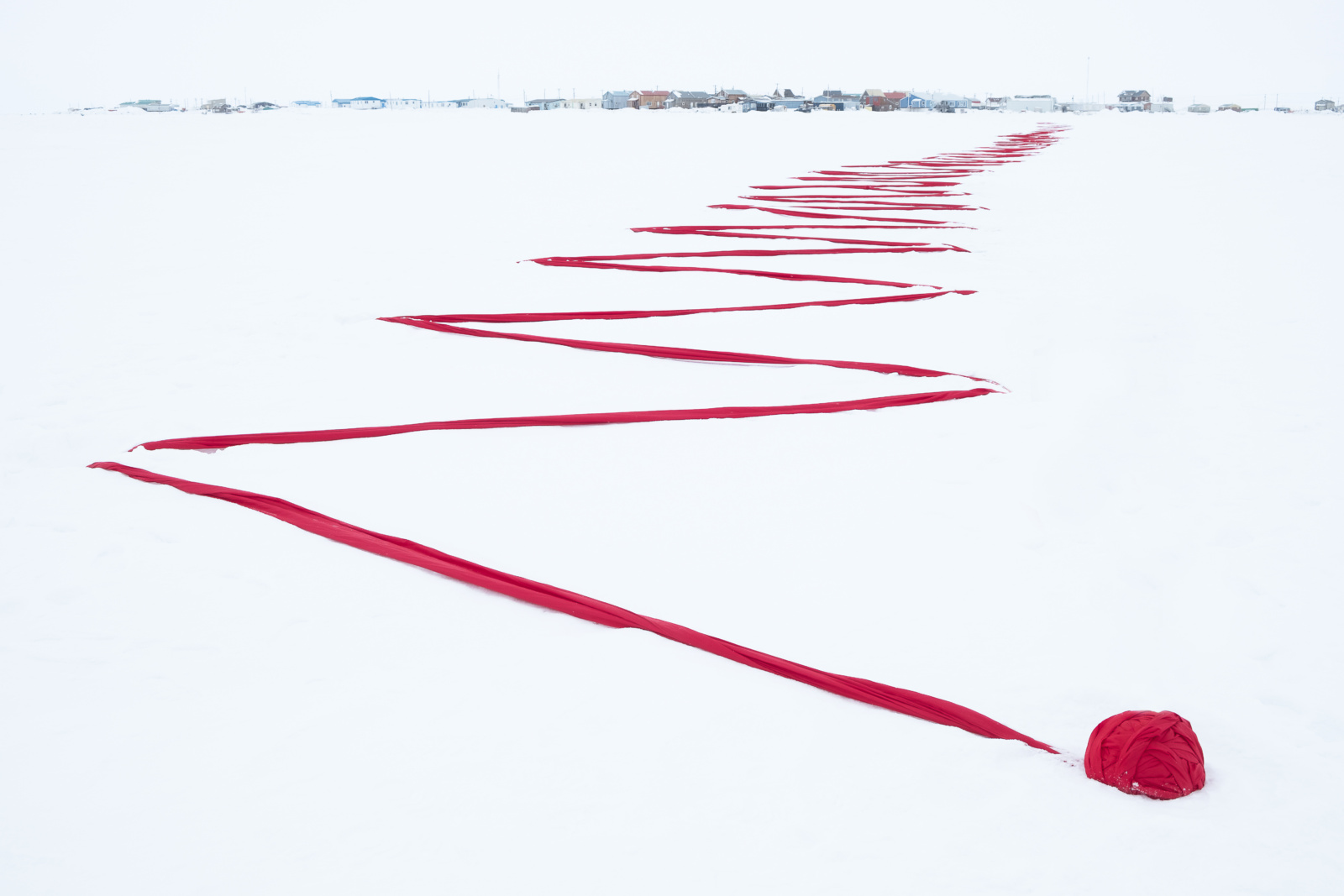
Maureen Gruben (Tuktoyaktuk, NWT)
Maureen Gruben’s multi-media practice incorporates diverse organic and industrial materials that are often salvaged from her local Arctic environment. She was born and raised in Tuktoyaktuk where her parents were traditional Inuvialuit knowledge keepers and founders of E. Gruben’s Transport. Gruben holds a BFA from the University of Victoria as well as diplomas in Fine Art, Creative Writing, and Indigenous Leadership from the En’owkin Centre, Penticton.
Recent exhibitions include Contemporary Art Gallery, Vancouver (2024); Rovaniemi Art Museum Korundi, Rovaniemi (2024); Fremantle Arts Centre, Fremantle (2024); Bodenrader, Chicago (2023); Museu de Arte de São Paulo Assis Chateaubriand, São Paulo; Women’s Gallery & Darkroom, New York (2022); Cade Centre for Fine Arts, Baltimore (2022); Marjorie Barrick Museum of Art, University of Nevada, Los Vegas (2022); public art installations for The Bentway Skate Trail & Canoe Landing, Toronto (2021); The Rooms, St. John’s (2021); Vancouver Art Gallery, Vancouver (2020); and the National Gallery of Canada, Ottawa (2019). Her work is held in public and private collections including the Art Gallery of Ontario, the National Gallery of Canada, Vancouver Art Gallery, and the Indigenous Art Centre, Crown-Indigenous Relations and Northern Affairs Canada.
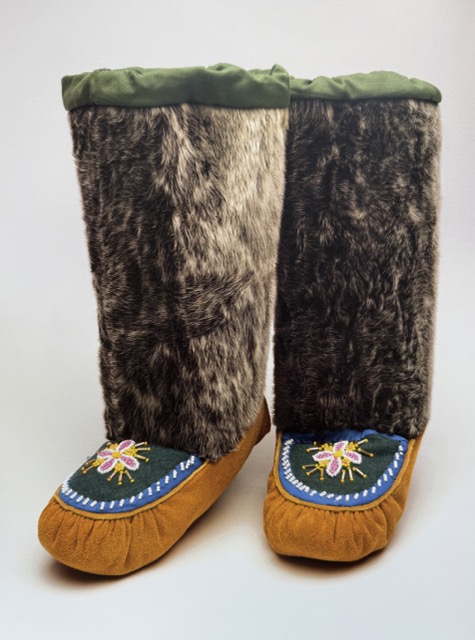
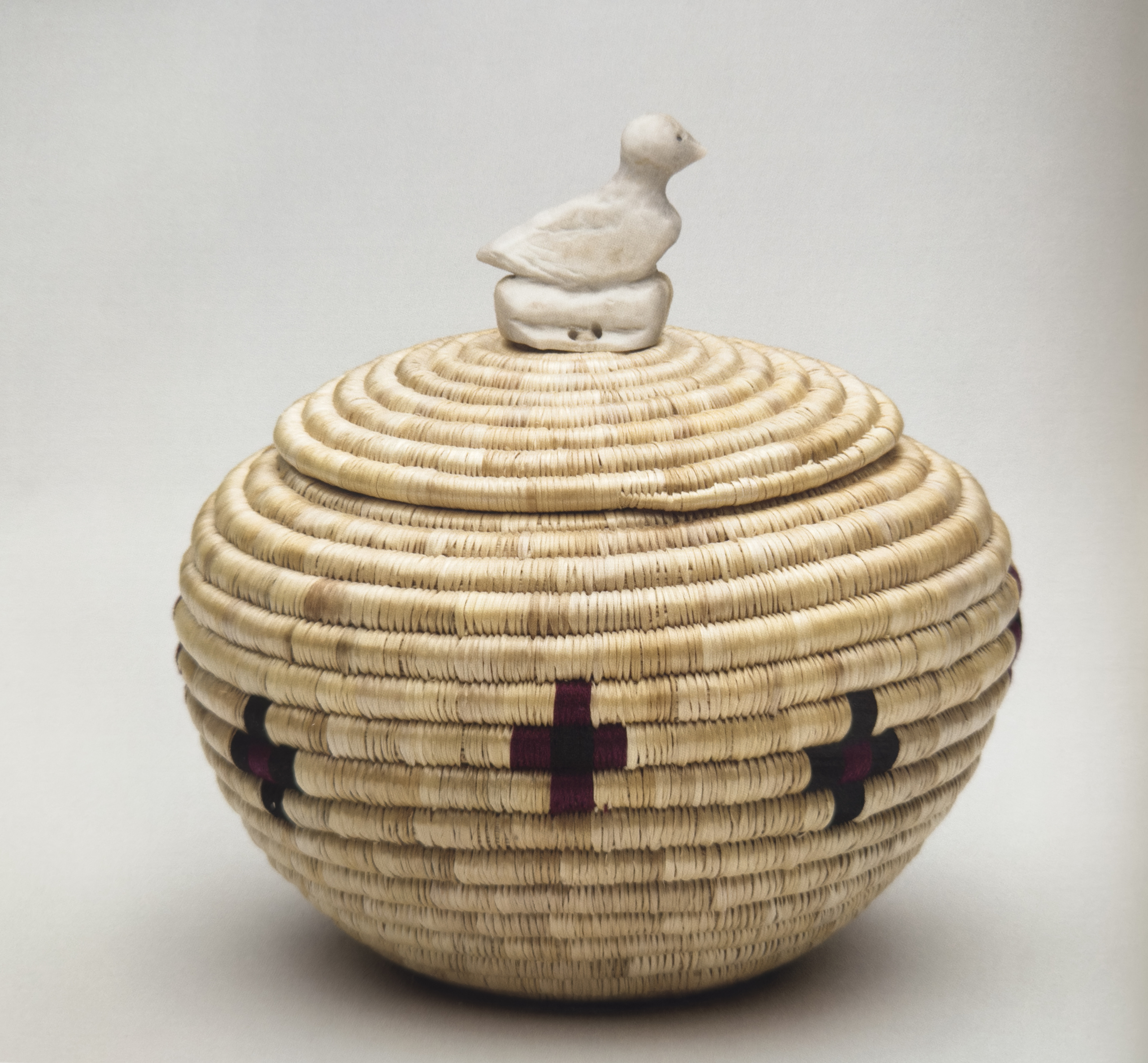
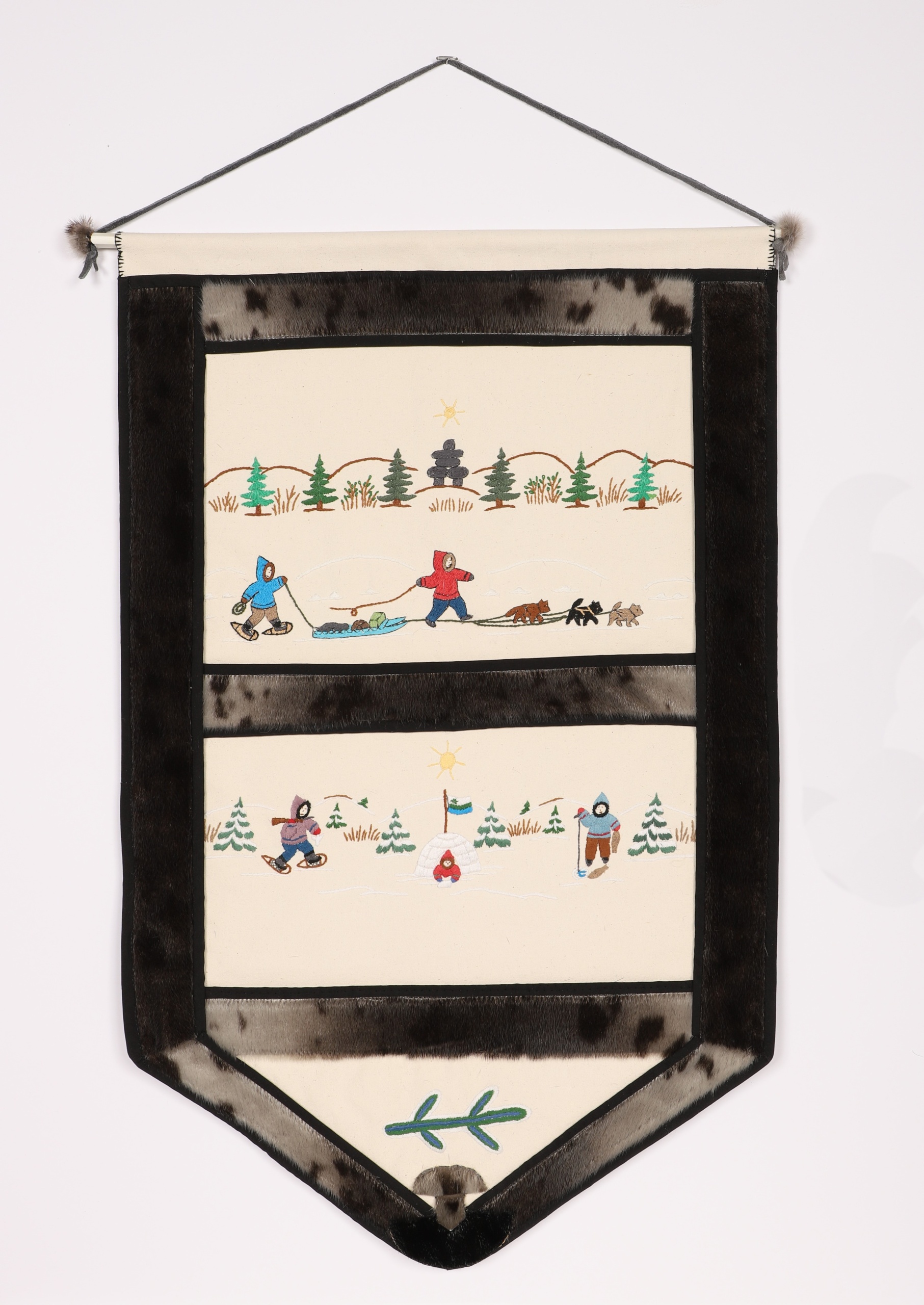
Special Exhibition Artists
Nellie Winters (Makkovik, Nunatsiavut)
Nellie Winters (b. 1938), is a master seamstress, one of the most respected artists in her community, and a matriarch of a four-generation family with many talented artists and craftspeople living throughout Labrador. Winters began embroidering and making Inukuluk (Inukuluit) figures as a child in boarding school. After finishing school, she refined and diversified her skills as an artist, remaining self-taught. Her work has been exhibited in multiple exhibitions and showcases and is collected by museums and private collectors throughout Canada and internationally. While she is an expert in several traditional art forms, in her practice Winters thrives on learning new techniques and produces a range of objects in a variety of materials. These include grasswork,
embroidery, moose-hair tufting, sewing, and doll making, among others.
Sarah Baikie (Rigolet, Nunatsiavut)
Sarah Baikie (b. 1950) has been producing beautiful grass basketry all her life. Her work can be found in several collections across North America as well as in many homes throughout Nunatsiavut. Baikie resides in Rigolet, a community renowned both within and outside Nunatsiavut for producing finely made and imaginative grassworks. The artist recalls that her father, John Oliver, offered to teach her one day when her grandmother was too busy to help her, igniting her lifelong commitment to the craft. Baikie has since passed on the skill to her daughters, as her father did to her.
Andrea Flowers (Hopedale, Nunatsiavut)
Andrea Flowers (1934-2019) was an accomplished craftsperson who enjoyed sewing, knitting, and crocheting, though she is best known as a seamstress of kamek (sealskin boots). Her particular expertise was in creating the labour-intensive and meticulously stitched traditional waterproof “black-bottom” sealskin boots, with skins that she cleaned and prepared herself from seals caught by her sons. She produced custom kamek using the same skills and knowledge that Inuit in Nunatsiavut have been passing on for centuries to create warm, waterproof boots that can weather the harsh Labrador climate. Flowers, fondly known as “Aunt Joy” throughout Nunatsiavut, preferred the skins of seals caught in the spring, because their hide is softer and easier to work with at that time of year. In the last years of her life, she expanded her sewing practice to include work with commercially tanned sealskin.
Winters, Baikie and Flowers were all featured in the nationally touring exhibition SakKijâjuk: Art and Craft from Nunatsiavut, curated by Dr. Heather Igloliorte.
The 2025 Bonavista Biennale is organized by Dr. Heather Igloliorte, Curator; Rose Bouthillier, Artistic Director; and Sue Balint, Executive Director.
The Biennale is produced in partnership with Igloliorte’s Canada Excellence Research Chair in Decolonial and Transformational Indigenous Art Practices and the Taqsiqtuut Indigenous Research-Creation Lab at the University of Victoria.
